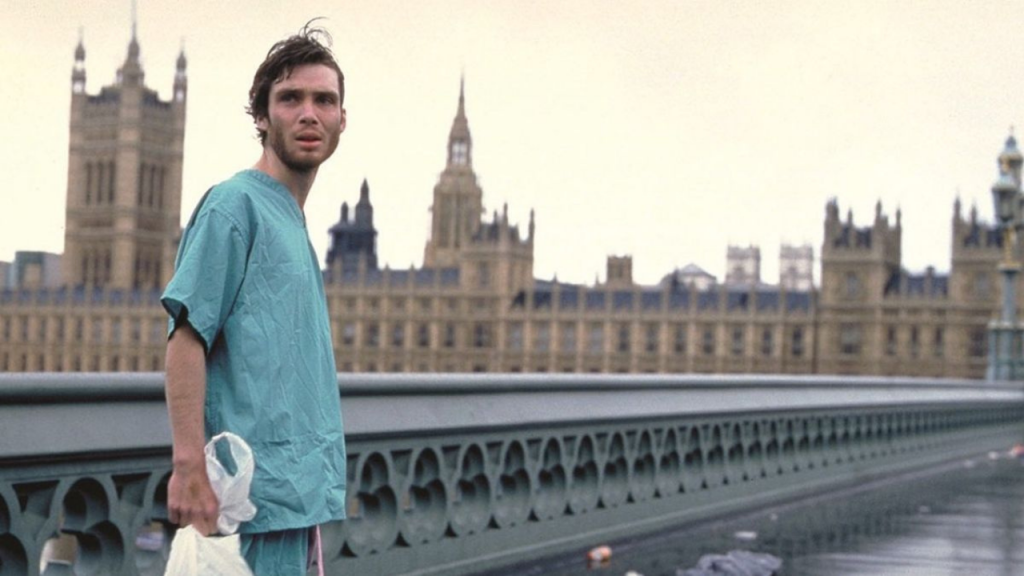Following the success of the hit zombie film “28 Days Later” and its sequel “28 Weeks Later,” fans of the franchise have eagerly awaited news of a third installment. Now, after over a decade, their patience has been rewarded with the official confirmation of “28 Years Later.” While details on the film remain sparse, it promises to take the series in an exciting new direction, exploring the aftermath of the rage virus outbreak nearly three decades later.
A New Chapter in the Franchise
“28 Years Later” marks the third film in the “28 Days Later” franchise, signaling a significant leap into the future compared to its predecessors. The film is poised to delve deeper into the ramifications of the initial outbreak, offering a fresh perspective on the dystopian world established in the previous installments. With acclaimed director Danny Boyle and screenwriter Alex Garland onboard for the first chapter of this new trilogy, anticipation among fans is running high.
Continuing the Legacy
While “28 Years Later” is expected to introduce new characters and storylines, there’s hope among fans for the return of familiar faces. Cillian Murphy’s portrayal of Jim in the original film left a lasting impression, leading some to speculate about his potential involvement in the new installment. Although Murphy did not reprise his role for “28 Weeks Later,” the return of Boyle and Garland has reignited speculation about his return to the franchise.
Evolution of the Concept
The “28 Days Later” franchise has always been known for its innovative approach to the zombie genre, offering a unique blend of horror and social commentary. With “28 Years Later,” the series is set to evolve further, potentially exploring themes of resilience, societal collapse, and the human condition in the face of adversity. By taking the story decades into the future, the filmmakers have the opportunity to reimagine the world of “28 Days Later” in exciting new ways.
Reflecting on Past Plans
Interestingly, the direction of “28 Weeks Later” could have significantly altered the trajectory of the franchise. Originally conceived to take place concurrently or shortly after the events of the first film, “28 Weeks Later” ultimately opted for a different timeline, setting the stage for the international spread of the infection and hinting at the infected’s evolving intelligence. While the initial plan for “28 Weeks Later” may have offered a different perspective, the chosen direction paved the way for the expansion of the franchise’s universe.
Looking Ahead
As production on “28 Years Later” progresses, fans eagerly await further updates and glimpses into the dystopian world envisioned by Boyle and Garland. With the promise of new characters, fresh storylines, and a continuation of the franchise’s signature blend of horror and social commentary, “28 Years Later” is poised to captivate audiences and reignite interest in the “28 Days Later” universe. As the countdown to the film’s release begins, fans can only imagine what dark and thrilling adventures await them in this long-awaited next chapter.
FAQ
What is “28 Years Later” about?
“28 Years Later” is the third film in the “28 Days Later” franchise, set nearly three decades after the original rage virus outbreak. It explores the long-term consequences of the outbreak and is intended to launch a new trilogy within the franchise.
Who is involved in the production of “28 Years Later”?
Director Danny Boyle and screenwriter Alex Garland, both known for their work on the original “28 Days Later,” are confirmed to be involved in the production of the first chapter of this new trilogy.
Will Cillian Murphy return for “28 Years Later”?
While Cillian Murphy did not return for the second film, “28 Weeks Later,” there is speculation among fans that he may return for “28 Years Later,” given his involvement in the original film and the return of Boyle and Garland.
What was the original plan for “28 Weeks Later”?
Originally, “28 Weeks Later” was not intended to take place 28 weeks after the initial outbreak. Instead, it was planned to occur concurrently or shortly after the events of the first film, exploring different survivors’ experiences during the outbreak.
Why was the original plan for “28 Weeks Later” changed?
The original plan for “28 Weeks Later” was deemed impractical because it would have contradicted the unique atmosphere and storytelling of the original film. Additionally, staying in the same timeframe as the original would have limited the franchise’s ability to explore new narrative directions and maintain its distinctive title gimmick.
What new elements does “28 Weeks Later” introduce for “28 Years Later” to build upon?
“28 Weeks Later” sets up several storylines for “28 Years Later” to explore, including the spread of the infection internationally, the evolving intelligence of the infected, and the loss of government control over affected areas.
Why is setting “28 Weeks Later” 28 weeks after the original outbreak more logical for a sequel?
Setting “28 Weeks Later” 28 weeks after the original outbreak allows for the exploration of new elements and developments in the aftermath of the initial crisis, building upon the foundation established in the first film while avoiding redundancy.
How does the 28-unit time jump convention contribute to the franchise’s uniqueness?
The 28-unit time jump convention, seen in titles like “28 Weeks Later” and “28 Years Later,” adds a distinctive and memorable aspect to the franchise’s branding and marketing. It also signifies significant leaps forward in the storyline, offering fresh perspectives and narratives with each installment.
